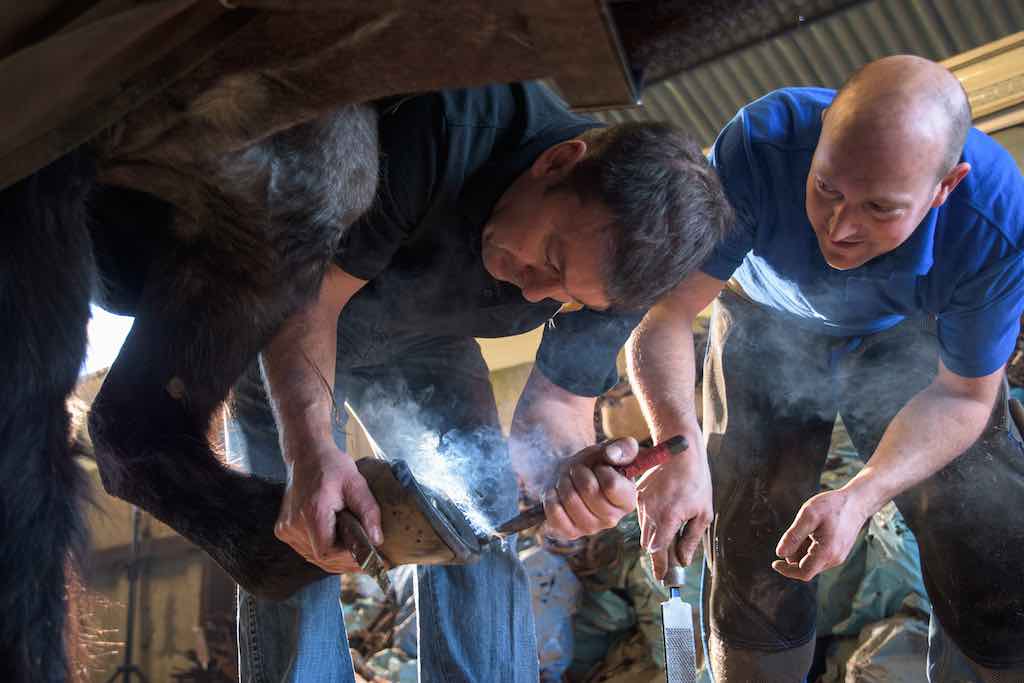Navicular disease is a common and often debilitating condition in horses. It is caused by degeneration of the navicular bone, which is located in the front foot of the horse. Without proper treatment, horses with navicular disease can suffer from chronic pain, lameness and decreased performance. The good news is that with the right care and attention, horses with navicular disease can be managed to reduce their pain and improve their overall health.
What is Navicular Disease?
Navicular disease is a progressive degenerative condition in horses that affects the navicular bone, which is located in the front foot of the horse. As the disease progresses, the navicular bone begins to deteriorate, resulting in inflammation and pain. This can cause decreased performance, lameness, and even permanent disability if left untreated.
The exact cause of navicular disease is unknown, but it is thought to be related to overuse or repetitive trauma to the navicular bone, such as from excessive exercise or incorrect shoeing or trimming. Genetics may also play a role in some cases.
Signs and Symptoms of Navicular Disease
The most common symptom of navicular disease is lameness, usually on one front foot but sometimes on both feet. This lameness may be intermittent or persistent and can worsen with activity. Other signs include:
- Stiffness in the front legs
- Shortened stride
- Hoof tenderness
- Resistance to flexion exercises
- Decreased performance
Diagnosis and Treatment of Navicular Disease
Diagnosing navicular disease can be tricky because there are no definitive tests to confirm it. Your vet will likely perform physical exams and hoof tests to look for signs of pain or lameness. X-rays may also be taken to look for evidence of bone or joint damage. In some cases, your vet may recommend further tests such as an MRI or nuclear scintigraphy to diagnose or rule out other conditions that may be causing lameness.
The goal of treatment for navicular disease is to reduce pain and improve mobility. Treatment typically involves a combination of rest, medication (such as anti-inflammatories), farrier care (such as corrective shoeing or trimming) and physical therapy (such as therapeutic exercises). In some cases, surgery may be recommended to remove part of the navicular bone or reposition it.
Tips for Managing Horses with Navicular Disease
Managing a horse with navicular disease takes patience and dedication, but there are some simple steps you can take to ensure your horse stays comfortable and performing at its best:
- Regular farrier visits: Work with your vet and farrier to develop an appropriate shoeing or trimming plan to reduce stress on your horse’s feet.
- Rest: Over-exercising can worsen symptoms of navicular disease, so make sure your horse gets plenty of rest between rides.
- Moderate exercise: Exercise is important for keeping your horse healthy, but too much can cause pain and inflammation. Talk to your vet about an appropriate exercise plan for your horse.
- Pain management: Anti-inflammatory medications can help reduce pain and inflammation in horses with navicular disease.
- Physical therapy: Therapeutic exercises can help strengthen your horse’s muscles and joints, improving mobility and reducing symptoms of navicular disease.
- Hoof care: Proper hoof care is essential for horses with navicular disease. Ask your vet or farrier for tips on how to keep your horse’s feet healthy.
Navicular disease can be a difficult condition to manage, but with proper care and attention it is possible to reduce pain and improve your horse’s quality of life. With patience and dedication you can get your horse back on track and enjoying life again!

